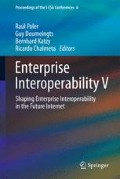Abstract
Today’s IT infrastructures of companies are dimensioned to cover highly diverse workloads. In particular, it must be guaranteed that peak workloads can be processed according to concerted Service Level Agreements (SLAs). Consequently, companies have to cope with high acquisition costs of IT resources such as machines and software including costs for their maintainance and operation to meet these requirements. Thereby, achieving a high utilization of the available resources during most of the time is not possible. Based on these facts, companies endeavor to outsource their IT infrastructure to IT service providers, which in turn intend to offer respectively tailored and on-demand usable IT services using cloud computing paradigms. Obviously, the IT service providers are anxious to minimize the total cost of ownership (TCO) of their operating environments. Therefore, their goal is to minimize the amount of the provisioned IT resources by meeting tenant-specific SLAs and to maximize the utilization of the hosted IT resources by sharing them among multiple tenants (multi-tenancy). This paper presents a dynamic and cost-efficient provisioning approach of multi-tenant capable system topologies based on a Monitor-Analyze-Plan-Execute (MAPE) loop concept. For workload estimation and derivation of a capable resource topology, the MAPE loop is executed regularly regarding specified time intervals, which forms a proactive dynamic provisioning approach. Thereby, the proposed provisioning techniques apply heuristics which already encapsulate concrete performance information instead of using complex performance model solutions. Finally, a topology calculation model is developed which is the base for the proposed dynamic provisioning approach. This model enables provisioning capabilities supporting customer demands, cost-efficient utilization of resource instances, and sharing of resources by multiple tenants.
Access this chapter
Tax calculation will be finalised at checkout
Purchases are for personal use only
References
A. Paschke, E. Schnappinger-Gerull. A Categorization Scheme for SLA Metrics. In Multi-Conference Information Systems. 2006.
A.Boerner. Orchestration and Provisioning of Dynamic System Topologies. Master’sthesis, University of Stuttgart, 2011.
F. Leymann. Cloud Computing: The Next Revolution in IT. URL http://www.ifp.uni-stuttgart.de/publications/phowo09/010Leymann.pdf, Photogrammetric Week ’09, 2009.
IBM. An architectural blueprint for autonomic computing. Autonomic Computing White Paper, 2006.
J. O. Kephart, D. M. Chess. The Vision of Autonomic Computing. Computer, 2003.
P. Mell, T. Grance. The NIST Definition of Cloud Computing (Draft). National Institute of Standards and Technology, 2011.URL http://csrc.nist.gov/publications/drafts/800-145/Draft-SP-800-145_cloud-definition.pdf.
D. Ardagna, B. Panicucci, M. Trubian, L. Zhang. Energy-Aware Autonomic Resource Allocation in Multi-Tier Virtualized Environments. IEEE Transactions on Services Computing, 99, 2010.
URL: http://aws.amazon.com/de/ec2, accessed on 14th Sep 2011
A. K. Palit, D. Popovic. Computational Intelligence in Time Series Forecasting: Theory and Engineering Applications. Advances in Industrial Control. Springer, 2005.
Y. Chen, S. Iyer, X. Liu, D. Milojicic, A. Sahai. SLA Decomposition: TranslatingService Level Objectives to System Level Thresholds. Technical report, HP Laboratories Palo Alto – Enterprise Systems and Software Laboratory, 2007.
H. N. Van, F. D. Tran, J.-M. Menaud. SLA-Aware Virtual Resource Management for Cloud Infrastructures. Computer and Information Technology, International Conference on, 1:357–362, 2009.
H. Zhang, G. Jiang, K. Yoshihira, H. Chen, A. Saxena. Intelligent Workload Factoring for a Hybrid Cloud Computing Model. In Proceedings of the 2009 Congress on Services - I, pp. 701–708. 2009.
Acknowledgement
The authors would like to thank Andreas Boerner, who contributed with his master thesis on this topic, and Peter Reimann, who carefully reviewed this article.
Author information
Authors and Affiliations
Corresponding author
Editor information
Editors and Affiliations
Rights and permissions
Copyright information
© 2012 Springer-Verlag London Limited
About this paper
Cite this paper
Ritter, T., Mitschang, B., Mega, C. (2012). Dynamic Provisioning of System Topologies in the Cloud. In: Poler, R., Doumeingts, G., Katzy, B., Chalmeta, R. (eds) Enterprise Interoperability V. Proceedings of the I-ESA Conferences, vol 5. Springer, London. https://doi.org/10.1007/978-1-4471-2819-9_34
Download citation
DOI: https://doi.org/10.1007/978-1-4471-2819-9_34
Published:
Publisher Name: Springer, London
Print ISBN: 978-1-4471-2818-2
Online ISBN: 978-1-4471-2819-9
eBook Packages: EngineeringEngineering (R0)

